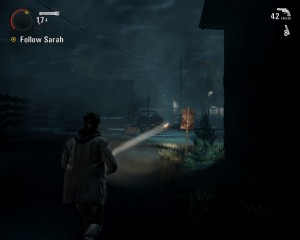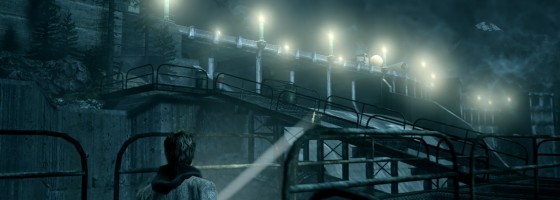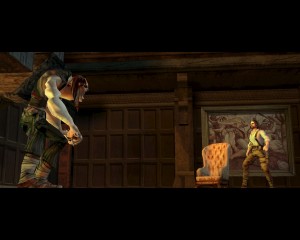Over the weekend I replayed Alan Wake which is one of my favorite horror games this generation. The game was billed as a horror title with action elements, much in the same vein that we see in games like Dead Space 3 and Resident Evil 6.
But there is one big problem that ruins the horror for Alan Wake and is seen in almost every horror game released: the designers fail to properly escalate the situation.
Terror-Rising:
In the past I’ve examined design of the horror genre from the hero’s perspective and the villain. Today, we’re going to focus on the situation itself and how it can raise or lower the horror.
Pacing is an important part of any horror experience, movie or game related. If you have nothing but terror for a long period of time, the audience will become use to it and get bored. However, if there is too long of a lull, then the audience will also become bored.
This is where escalating the situation or “raising the stakes” comes into play: The more threatening the problem at hand, the scarier the situation becomes.
It’s common in most horror movies where there is a mastermind villain, that they will go on a rampage that shows what would happen if they win. Or have them winning and the hero is pushed into a corner and forced to do something crazy to survive.
In horror movies about mindless monsters or surviving, the situation can be escalated on the survivor’s side of things. For example: Running out of food, someone needs medicine to survive; they have to get out before it’s too late and so on. In these cases, you don’t need to add new monsters or change their dynamic; instead the focus is on the problems of the survivors.
With video games however, we run into problems with escalating in two major areas.
The first problem is with the enemies themselves. Horror games normally only feature a small handful of enemy types to challenge the player. As always: The first time you fight a monster is scary, the 50th time, not such much.
But it doesn’t just have to be fighting monsters; it can also be just interacting. Both Alan Wake and Amnesia: The Dark Descent suffered the same problem in that regard. In Alan Wake, the player will be fighting the same 6 enemy types for the entire game. While Amnesia only had one basic enemy that they will interact with and another that only appears at select areas.
The more you see the same situation, the more acclimated you’ll get to it until eventually it won’t bother you anymore. To compensate, designers usually fall back on two ideas: boss fights and stronger enemy variants.

The use of light and shadow helped set the tone for Alan Wake but the developers did not do enough with it.
Boss battles in horror games break up the norm and do a good job of escalating. However the escalation only lasts for the length of the boss fight and then things return to the status quo.
Introducing stronger variations doesn’t mean anything if you are fighting the same enemies. Raising enemy stats is not the same as introducing something brand new to fight.
The other problem with escalation in horror games is that the designers only escalate one side of the equation: The player.
Giving the player more weapons or abilities is a standard form of progression seen in any video game. However this form of escalation is a killer to tension in a horror game. It’s hard to be scared when you just picked up a new shotgun.
Even if the designers do introduce new enemy types if they aren’t suitable threats then we run into the same problem as before: An enemy who is 20 feet tall seems scary, but not so much if the player has a quad-rocket launcher.
Playing Dead Space 2, I spent more time trying to come up with witty one-liners for my kills than actually being scared.
One area of horror that video games don’t normally tend to explore is the player’s situation gradually becoming worse. In zombie movies the main threat after the initial zombie attack is normally trying to find enough resources to live.
The problem is that with most horror games featuring action mechanics, reducing the player’s ammo supply will make the game unbeatable. As the player’s only recourse for survival hinges on them blasting away at any enemies that get in their way.
When trying to design horrific situations, the issue comes down to balance: How do you make the player feel stronger without reducing the terror of the situation?
Randomized Stakes:
I came up with an idea that became a part of my horror game doc that you can find in the portfolio section. In the game, after a specific event or time has passed, a “panic event” will happen to mix up the game. These events will introduce a powerful enemy or alter the game forcing the player to adapt.
Each event cannot be defeated by brute force alone, rendering any weapons or upgrades by themselves useless against them.
Randomized elements are popular among rogue-like design and it is surprising that we don’t see any horror games that make use of them.
One of the major problems with horror design is that the linearity turns horror games into a one-play experience as once you know where all the scares are, there is no more horror.
The challenge of good horror design is maintaining a balance between the player and the threats at hand. If one side becomes stronger, then the other side must also grow to match. And keeping everything at the same level also doesn’t work as once the situation becomes routine, there won’t be any horror or tension.



